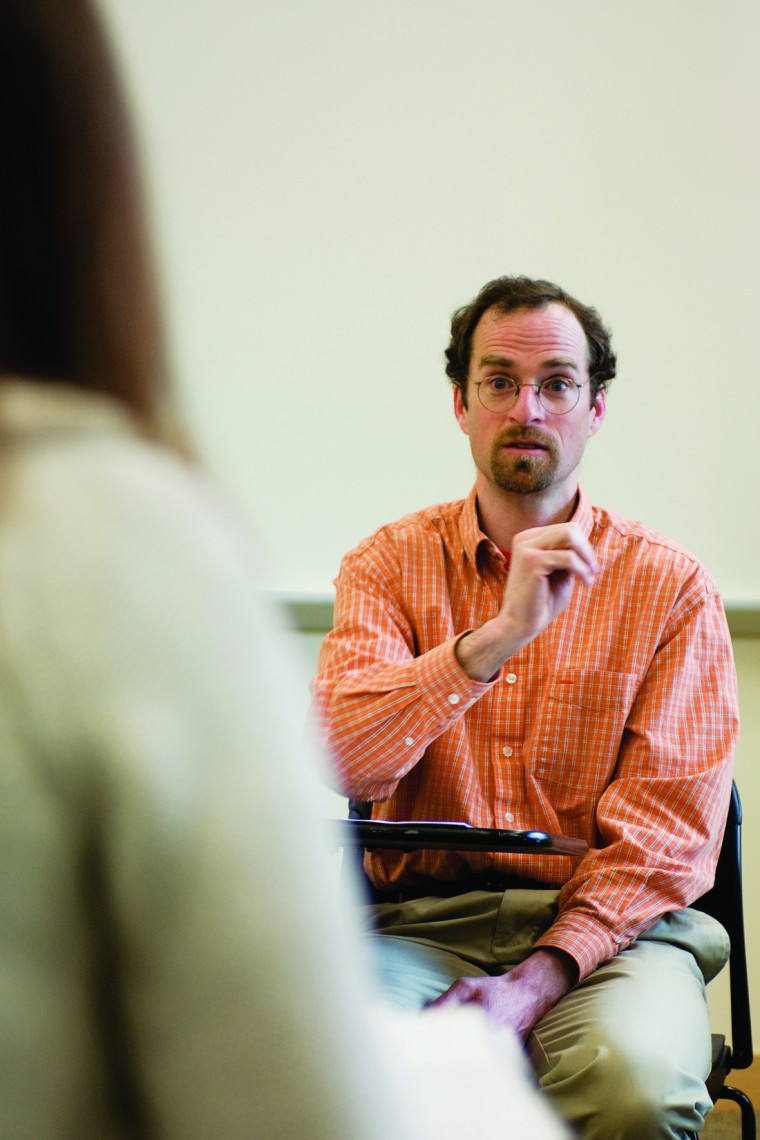Judaic Moroccan Papers Go Digital
Open gallery

What began with simple curiosity about a small room filled with bags of papers in a synagogue in Rabat, Morocco, has become a project that will help change the way anthropologists and historians document cultures around the world.
Oren Kosansky, assistant professor of anthropology, has earned a $50,000 grant from the National Endowment for the Humanities to develop a digital archive of Judaic Moroccan documents from the 18th, 19th, and 20th centuries.
Kosansky’s fascination with Judaism in Morocco dates back to his graduate work in the early 1990s.
In 2005, a Fulbright research grant took him to Rabat, the capital of Morocco and former home to a large Jewish community.
During his stay, Kosansky worked closely with leaders of Rabat’s major synagogue and community center.
It was there that he discovered a genizah—a room or depository found in synagogues, where old religious documents that are no longer in use are kept and periodically buried.
“I found literally thousands of books and documents pertaining to virtually all facets of Jewish life in Morocco, especially as it was transformed during the 20th century,” says Kosansky.
“My first thought was, ‘How can I save these materials from burial, so that they can be consulted by community members and scholars?’ ”With the approval of community leaders, Kosansky sorted through the documents, noting which ones were appropriate for historical preservation.
Synagogue leaders gave Kosansky these documents, and he donated them to the Jewish Museum in Casablanca.
The unparalleled collection contains many unique documents, including handwritten letters, unpublished manuscripts, and community records, as well as published materials in a variety of languages, including Judeo-Arabic, Hebrew, and French.
The documents now held by the museum will be the focus of Kosansky’s NEH digitization project.
He will begin the project while he is directing Lewis & Clark’s first overseas program in Morocco this spring.
“This is about far more than an archive,” says Kosansky.
“It’s an opportunity to effectively bring a cross-cultural project to fruition and a chance to develop a model for academicians and laypeople to share information and ideas about the documents that they access.”
More L&C Magazine Stories
Lewis & Clark Magazine is located in McAfee on the Undergraduate Campus.
MSC: 19
email magazine@lclark.edu
voice 503-768-7970
fax 503-768-7969
The L&C Magazine staff welcomes letters and emails from readers about topics covered in the magazine. Correspondence must include your name and location and may be edited.
Lewis & Clark Magazine
Lewis & Clark
615 S. Palatine Hill Road MSC 19
Portland OR 97219

